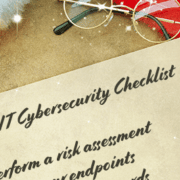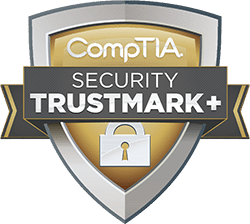Local Government’s Guide to Risk Management
Cyber-related issues — including data theft and cyberattacks — are now officially recognized as one of the top 10 global long-term risks. It’s no longer enough to implement a set-and-forget tool designed to catch breaches as they happen.
Instead, organizations need to be proactive — they need cybersecurity that delivers genuine risk management.
In this article, we’ll discuss the local government’s guide to risk management. The following three guidelines are designed to reduce the likelihood of an attack and minimize the damage in the event of a successful breach.
Remember, small businesses are not immune.
“Small companies are hit hardest by data breaches… Research has shown that, despite a continued increase in spending, smaller firms are feeling the weight of data breaches 70 times more heavily than larger companies, at an average of 3.4% of their revenue per incident.” — Forbes
It’s essential that you take the necessary steps to protect your most valuable digital asset: your data.
Create a Backup and Disaster Recovery Plan
No matter how much expenditure you allocate to cybersecurity services, you can never entirely eliminate the risk of a breach. Cybercriminals are always evolving their tactics, with new malware becoming increasingly sophisticated and devastating.
It’s not just human-led attacks you have to worry about, either. Natural disasters and severe weather can wreak havoc on your data storage and render files and folders inaccessible.
One of the most effective risk management strategies is creating a backup and disaster recovery plan. This document details the actions your organization can take in the face of catastrophe to get back to business as fast as possible.
This might include:
- How to reduce the risk of data loss
- Alternative ways of accessing mission-critical data
- How to communicate with staff and what to say
- Which team members are responsible for what
- How to implement a work-from-home policy
- How to access backups
Protect Citizen and Employee Data
Personal data in the wrong hands can prove disastrous. Identity theft and fraud are very real risks that must be mitigated with robust cybersecurity measures.
Data encryption, for example, can help safeguard mission-critical and citizen data. Encryption involves encoding data so that it is meaningless or inaccessible to unauthorized users.
Run Annual Risk Assessments
There’s no point putting cybersecurity strategies in place and just hoping they’ll save your department from ruin if the worst-case scenario were to happen. If there’s something missing from your disaster recovery plan or your backup failed, it’s already too late.
To avoid this, run annual risk assessments. Take a good, hard look at your systems. They’ll likely change over the years as you introduce newer technologies — your cybersecurity strategies must reflect these changes.
Walk through your disaster recovery plan, too. Make any adjustments for staff turnover and new backup systems.
Finally, test your backup. Check that the files and folders saved are not corrupt. Be sure you can access them both offline and off-premise.
Prevention Is Critical
Cybersecurity is a chief concern among organizations of all sizes. The best way to protect your employees and citizens is to introduce top-quality prevention measures that are proactive in risk management.
The hard truth is, cyberattacks are only going to become more rampant, more costly, and more difficult to prevent. The best way forward is mitigating risks today to protect yourself tomorrow.










